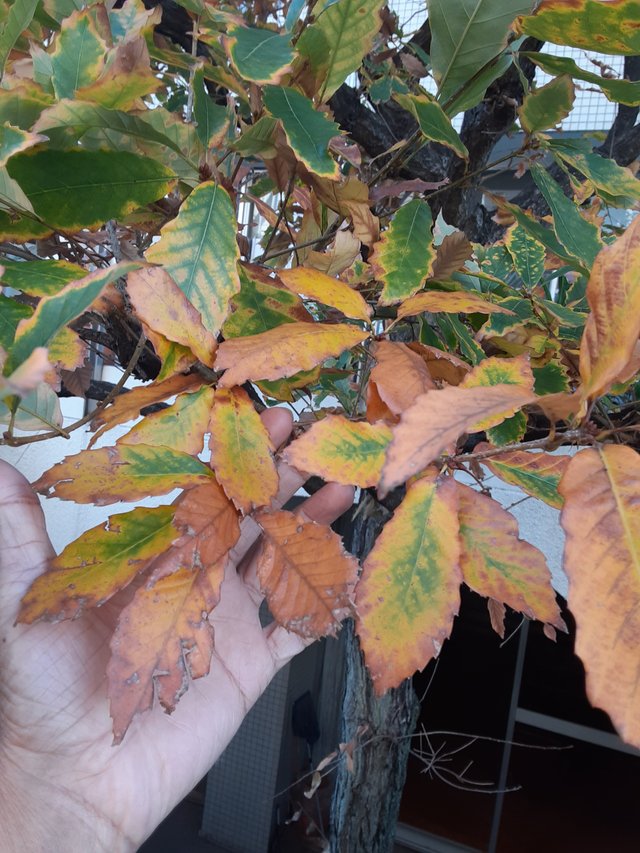
Quercus serrata, also known as the Japanese evergreen oak or sawtooth oak, is a stunning tree famous for its autumnal display. Here's a glimpse into its leafy transformation:
Autumn Symphony: As summer surrenders to fall, Quercus serrata's leaves embark on a breathtaking metamorphosis. The once vibrant green canvas is splashed with vibrant hues, morphing into a tapestry of fiery crimson, rich rust, and golden ochre. Some leaves retain hints of their summertime emerald, creating a captivating blend of warm and cool tones.
Textural Transformation: The leaves don't just change color; they change their very essence. Summer's smooth sheen gives way to a leathery roughness, tinged with a delicate brittleness that whispers of the coming winter. Veins, once barely visible, stand out in intricate networks, like rivers carrying the colors of the season.
Dancing Foliage: The crisp autumn air sets the leaves in motion, creating a mesmerizing spectacle. They twist and twirl in a ballet of amber and ruby, showering the ground with a glistening carpet of fallen jewels.
Lingering Beauty: Unlike many deciduous trees, Quercus serrata clings to some of its autumn-kissed leaves throughout winter. These persistent gems, often edged with brown, add a touch of russet warmth to the stark winter landscape.
Symbolism: In Japanese culture, the Quercus serrata holds a special significance. Its autumnal transformation symbolizes not just the passage of time but also the beauty of impermanence, reminding us to cherish each fleeting moment.
So, Quercus serrata's autumn foliage is a true masterclass in nature's artistry, offering a vibrant farewell to summer and a graceful hello to winter.
Ref.:
 |  |
Upvoted! Thank you for supporting witness @jswit.
Downvoting a post can decrease pending rewards and make it less visible. Common reasons:
Submit